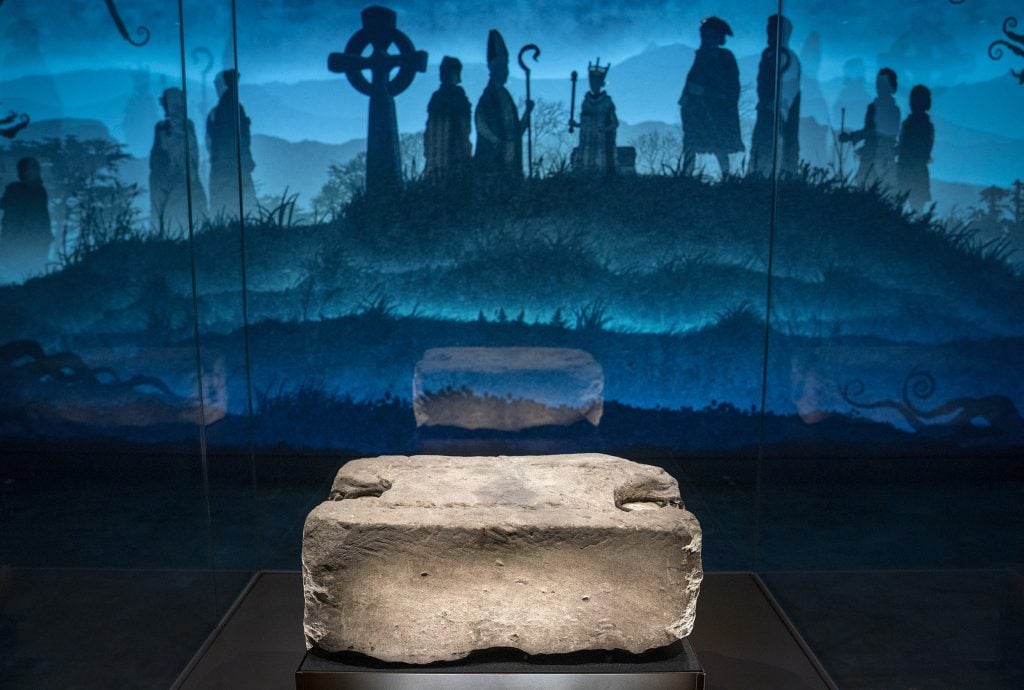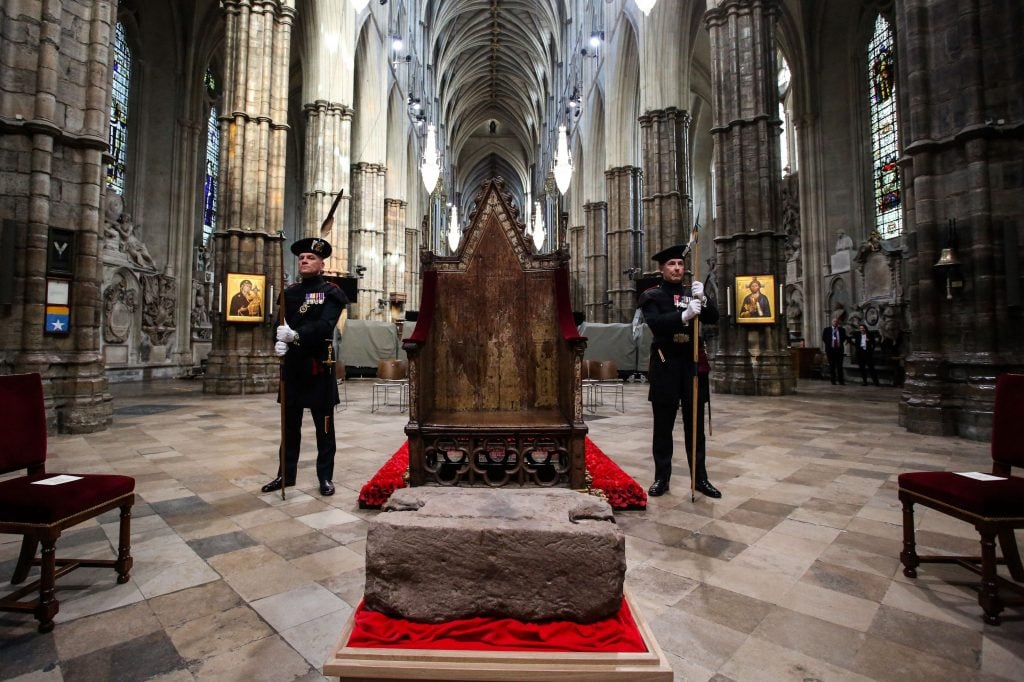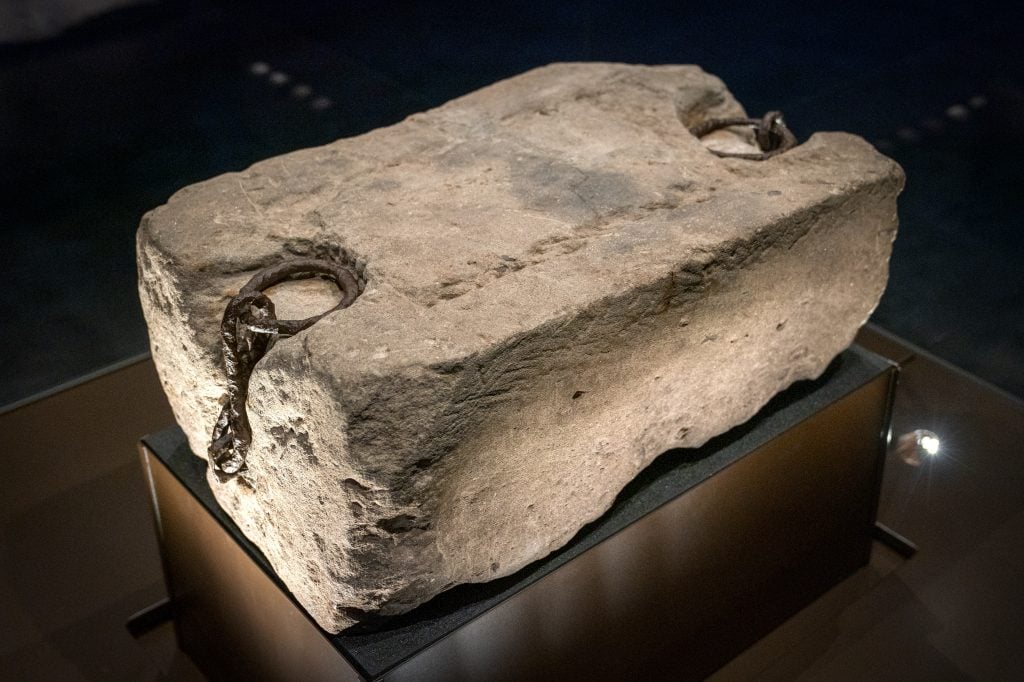Archaeology & History
The Stone of Destiny Was Once But a Humble Doorstep, a New Study Reveals
The wear atop the stone was found to predate its use in coronation ceremonies.

It’s been mythologized as the stone on which the biblical Jacob received visions of heaven, and revered as the totem that has graced the coronations of Scottish and British rulers at least since King Alexander III was crowned in 1249. But a recent analysis of the Stone of Destiny has found that the historic artifact may have far more humble roots… as a doorstep.
An ancient symbol of Scottish sovereignty, the Stone of Destiny, also known as the Stone of Scone, is a rectangular block of red sandstone weighing 335 pounds. Legend traces it back some 3,000 years to Palestine before Fergus Mor transported it to Scotland for his ascension as the first King of the Scots around 498—though its origins remain murky at best. The Stone has weathered theft (by Edward I in 1296), a bombing (as part of a suffragette campaign in 1914), and yet another theft (by students in 1950). Today, it is installed underneath the oak-built Coronation Chair as British monarchs are inaugurated.

The Stone of Destiny at Westminster Abbey on April 29, 2023. Photo: Susannah Ireland/POOL/AFP via Getty Images.
In March, the Stone was transferred from Edinburgh Castle, where it has resided since 1996, to the newly opened Perth Museum. A study undertaken by Historic Environment Scotland (HES) before the move found that the block may have once been part of a step or threshold.
According to HES’s findings, the wear found on the top surface of the Stone predated its use in coronation rituals. Though some of these ceremonies may have involved the monarch stepping onto the stone, HES senior cultural significance advisor Nicki Scott pointed out, the amount of wear “doesn’t support such use.”
“Even several hundred years of such a ritual wouldn’t create the level of wear we see,” she told the Daily Record. “It’s more likely that the stone had earlier served as a step, although we don’t know the context for this.”

The Stone of Destiny on display at Perth Museum, 2024. Photo: Jane Barlow/PA Images via Getty Images.
To this, Dauvit Broun, the chair of Scottish history at the University of Glasgow, who contributed to this latest study, added that the Stone could have been “repurposed as an inaugural throne” at some point in history. This would also align with the legends that have grown up around the relic, he said.
“Once it became the inaugural throne it would be understandable if new legends were fashioned to ‘explain’ its association with the kingship as an ancient one—legends which, unfortunately, have obliterated whatever tales were told about its original significance before it became the inaugural Stone,” he told the Daily Record.
According to the U.K. outlet, this latest analysis also found that the Stone was quarried near Scone, likely from an earlier church or even a Roman ruin.
A 2023 study of the Stone, carried out ahead of King Charles’s coronation, uncovered never-before-seen markings atop the artifact. Via 3D modeling, researchers discovered a series of three Xs and a V carved into the Stone’s surface, appearing like Roman numerals as much as rudimentary crosses.
Other tool marks left on the object indicate that it may have been worked on with various tools by more than one stonemason. X-ray fluorescence further picked up copper alloy on the Stone’s top surface, suggesting that a copper or brass object, perhaps a saint’s bell, had rested on it over a long period.





